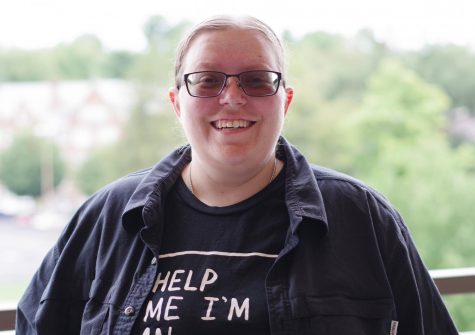ZACH RUSSO | Reporter
Tap, tap, tap, tap, tap.
My foot moves a mile a minute while I’m sitting in class.
I don’t notice it, but that’s because I’m not paying attention. I’m off in my own little world doing anything besides listening to the teacher.
The only way my foot stops is if I concentrate on my foot not moving, which also means I’m not concentrating on what I am supposed to be doing.
I’ve had a problem my whole life of not being able to pay attention. In elementary and middle school, no one noticed. Toward the end of high school, I started having more trouble, and my grades started to wobble between passing and failing.
When I started college, I tried to take short classes. Unfortunately, even 50-minute classes couldn’t hold my attention for more than 30 minutes. At the end of my first semester, I only passed two of my four classes.
Tap, tap, tap, tap, tap.
My parents were upset, but a short time later, my mom asked me some questions: Do you often find yourself not paying attention? Do you fidget a lot?
After I answered them she said I had the symptoms of ADHD, Attention Deficit Hyperactivity Disorder. About 5.8 million U.S. children ages 5 to 17 have this diagnosis, according to a 2015 study by the George Washington University Milken Institute School of Public Health.
[perfectpullquote align=”full” cite=”” link=”” color=”” class=”” size=””] About 5.8 million U.S. children ages 5 to 17 have this diagnosis, according to a 2015 study by the George Washington University Milken Institute School of Public Health.[/perfectpullquote]
Some of the symptoms include trouble paying attention, trouble staying on task, being disorganized and making careless mistakes.
At first, I didn’t believe this could be true because everyone I know who has ADHD or ADD was diagnosed at a young age. I was 19 when this first came up.
Tap, tap, tap, tap, tap.
Another semester passed and more bad grades came along. I finally decided that I needed to consider my options.
The most promising was to get a prescription from my doctor to start taking medication such as Ritalin or Adderall. These medications are known as stimulants almost like meth.
But for people with ADHD, it does the opposite. For people with ADHD and ADD, the medications increase dopamine levels in the brain, boosting concentration and reducing hyperactive behavior.
When I went the doctor, I explained what was going on.
“You’ve always been a rather fidgety little bugger,” my doctor joked.
“So do you think I should be on medication?” I asked.
“We will start you out with a low dose and see how that goes,” she said. “We can always increase it if necessary.”
I finally received the medication, which was an off-brand called Concerta. I started with 15 milligrams, but I quickly realized that wasn’t strong enough; I could feel it wearing off halfway through the day.
I went back to the doctor, and she upped the dosage to 36 milligrams.
This seemed to work, but the real test came when the fall semester started at school, and I enrolled in college algebra.
I was able to pay attention during the whole class. I also was able to concentrate the whole day and into the evening. I was able to finish my homework.
The only drawback to the medicine was that it neutralized my appetite; I would go a whole day and not eat a single thing except maybe a granola bar.
As the semester started winding down, I was nervous because I didn’t want to fail any more classes, and if I did, would that mean the medication failed?
Luckily, that was not the case; I passed all four of my classes — even college algebra with a 79 percent.
The rest of my time at Meramec and now at Lindenwood, I make sure I am always on my medication.
Even though I might not always be paying attention — and I got up about 20 times while writing this — I have no doubt that the medication helps. It increases my concentration, which has helped me not only in school, but I also have become a lot more organized.
Although these disorders might be more common than others, it doesn’t mean that they should be ignored.
I don’t know where I would be if I hadn’t talked to my doctor and gotten on the right medication.
Finally, I don’t need to tap.














